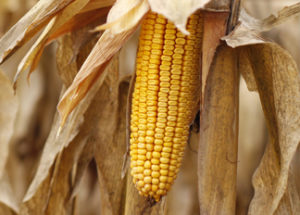
Managing Corn Harvest
By Nora Schultz, Sales Agronomist, CCA
Water Use
Corn that is at ½ milk line requires about 2.25 inches of water (or 0.1-0.2 inches per day) to reach physiological maturity (black layer). Once corn reaches black layer it stops accumulating dry matter and does not require water.
Corn Drydown
According to Iowa State University this corn crop is averaging 5-10 days behind normal corn maturity. This is can affect corn dry down. In general, corn dries 0.5-1.0% per day in September and 0.25-0.5% per day in October. Being a little behind may mean more trips to the field to scout for your desired moisture.
Ear Rots
Ear rots are generally brought on by damp weather after pollination and during grain fill which most of us have had this year. For a full field picture, ideally you would sample 20 ears in 5 different locations by pulling back the husk and using a crop diagnostic guide or you Jacobsen Seed Representative to help you identify the specific pathogen. Hybrids or fields that are diagnosed with ear rots should be harvest early, segregated and dried quickly to lower than 15% moisture to slow fungal progression. For long term storage dry grain to less than 13% and cool to below freezing. Certain ear rot pathogens such as fusarium and aspergillus can also produce mycotoxins that are harmful to livestock and humans. Contact your local grain handling facility about tests for mycotoxins.
Managing Harvest Loss
This harvest season every kernel in your field plays an important role in your profitability. Understanding your harvest loss is key. Pre-harvest loss of ears can total 1 bu/ac when one 3/4lb ear is lost per 440 square feet. For every two kernels per square foot, one bushel per acre is lost. This can come from shelling at the corn head or incorrect internal settings leading to kernel loss at the back of the combine. Taking a few minutes to stop and check for loss at regular intervals can lead to some easy dollars in your pocket at the end of the season.
Fertilizer
Recent studies have shown that fertilizing after corn and in front of soybeans brings profitable yield increases to most soybean acres. Potassium is often associated with the movement of water, nutrients, and sugars within the plant. It also plays an important role in the opening and closing of stomate structures, stalks strength in corn and nodulation in soybeans.
Fertilizing after corn is even more important when corn stover is taken from the field (silage, stalk bales). A majority of potassium is stored in that plant material. Potassium removal rates can be as high as 5x higher when taking plant material compared to grain only.
